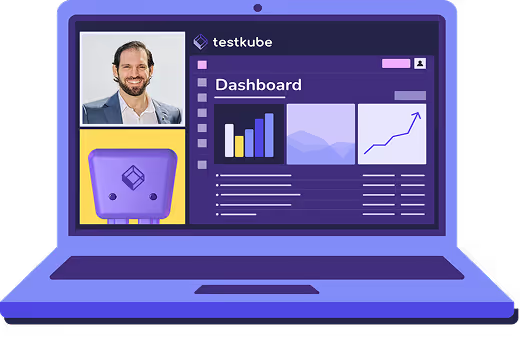Table of Contents
What Does IT Testing Tools Mean?
IT testing tools include a wide range of software used to plan, execute, and analyze tests throughout the software development lifecycle. They assist QA, DevOps, and engineering teams in identifying bugs, validating functionality, and verifying performance before deployment. These tools span multiple categories, including automation, management, performance, and security testing, supporting both manual and continuous integration workflows.
Why It Matters
Modern IT systems are distributed, complex, and constantly evolving. Manual testing alone cannot keep pace with agile or DevOps release cycles. IT testing tools provide scalability, repeatability, and consistency to validation, helping teams:
- Accelerate testing through automation
- Detect issues early before production
- Ensure consistent behavior across environments
- Improve overall software quality and user experience
Without these tools, testing becomes fragmented and error-prone, slowing release velocity and increasing maintenance costs.
How It Works
IT testing tools automate key aspects of software validation such as simulating user interactions, sending API requests, generating load, or identifying security vulnerabilities. They integrate into CI/CD pipelines and can be executed on demand or continuously during deployment cycles.
When paired with Kubernetes-native orchestration platforms like Testkube, these tools run within clusters for distributed execution, unified reporting, and scalable resource management.
Key Categories and Examples
1. Test Automation Tools
Automate repetitive test cases for web, API, and mobile applications.
- Selenium: Open-source framework for browser automation across multiple languages
- Appium: Automates mobile web, hybrid, and native apps on Android and iOS
- Cypress: End-to-end testing framework for modern web applications
- Playwright: Automates Chromium-based browsers for UI and functional testing
2. Test Management Tools
Organize test cases, manage execution, and track results.
- Jira: Popular for issue tracking and project management
- TestRail: Centralized test case management and execution platform
3. API Testing Tools
Validate API functionality, performance, and response consistency.
- Postman: Automates API test cases and monitors endpoints
4. Performance Testing Tools
Measure scalability, responsiveness, and reliability under load.
- Apache JMeter: Open-source load testing tool for APIs and web applications
5. Security Testing Tools
Detect vulnerabilities in applications and APIs.
- OWASP ZAP: Open-source tool for identifying web security flaws
6. Browser and Mobile Testing Tools
Ensure compatibility across browsers and devices.
- BrowserStack: Cloud platform for browser and device testing
- Android Studio / Xcode: Development environments that include integrated testing tools
Key Benefits
- Automates repetitive testing tasks to improve efficiency
- Enhances accuracy and reliability in test results
- Reduces time to release by integrating with CI/CD pipelines
- Increases test coverage across environments and devices
- Improves collaboration between development, QA, and DevOps teams
How It Relates to Testkube
Traditional IT testing tools often operate independently and require custom scripts or CI/CD integration to scale. Testkube acts as the orchestration layer that unifies these tools within Kubernetes, creating a single cohesive testing ecosystem.
- Centralized Execution: Testkube runs automation, performance, and API testing tools like Cypress, Postman, and JMeter natively inside Kubernetes clusters
- Decoupled from CI/CD: Tests can be triggered on demand or based on events, reducing pipeline bottlenecks
- Environment Parity: The same test definitions run identically across local, staging, and production environments
- Unified Observability: All results, logs, and metrics flow into one control plane for easier debugging and analysis
- Scalable and Cost-Efficient: Teams reuse existing Kubernetes infrastructure instead of paying for hosted execution services
By orchestrating IT testing tools through Testkube, teams modernize their testing workflows, achieve consistent results, and accelerate delivery without losing control of their infrastructure.
Best Practices
- Choose testing tools that align with your application type and technology stack
- Containerize test frameworks for portable and reproducible execution
- Automate tests within CI/CD but separate orchestration for scalability
- Aggregate test results in a single reporting layer for full observability
- Integrate security, performance, and functional testing into one workflow
Common Pitfalls
- Running tests only in CI/CD pipelines can overload build times
- Managing tools in isolation creates inconsistent environments
- Ignoring orchestration limits scalability and consistency
- Limited visibility across tools makes debugging difficult
- Neglecting Kubernetes-native execution results in slower feedback loops
Frequently Asked Questions (FAQs)
What are IT testing tools used for?
They automate and manage software validation processes to ensure quality, performance, and security in IT projects.
Are IT testing tools only for developers?
No. They are used by developers, QA engineers, SREs, and DevOps teams involved in delivery and maintenance.
Can Testkube run IT testing tools?
Yes. Testkube can run any containerized testing framework including Selenium, Postman, JMeter, and Appium inside Kubernetes.
Why run tests inside Kubernetes?
Running tests in-cluster improves scalability, consistency, and environment parity across development, staging, and production.
How does Testkube differ from tools like Selenium or JMeter?
Selenium and JMeter perform tests. Testkube orchestrates, manages, and scales those tools across environments from a unified control plane.


